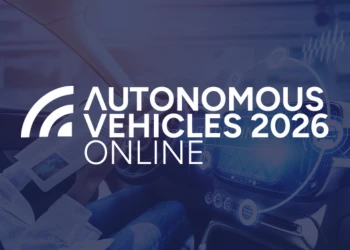Electric Charging - The Role of the Supermajors
Add bookmarkIt has been voted best petrol station in London and the south-east for the last four years – but you won’t find this state-of-the-art forecourt in England’s capital city. Instead, the Parkfoot Spar, which began life as a rag-stone quarry, is located in West Malling – an historic market town in west Kent, home to just 2,300 (i) people.
When I visit the 280 square meter site on a crisp December morning, I am struck by the number of customers using the filling station, which was extended in 2013 to include an on-site butcher and an in-store bakery. I count eight cars in the forecourt using the four double-sided petrol and diesel pump islands supplied by supermajor BP.
But perhaps I shouldn’t be surprised. While petrol stations in London continue to dwindle – there are 23 fewer now than there were three years ago – forecourts in the rural south-east have largely remained stable (ii). “There has only been one closure since the end of 2013”, says James Haigh, a business consultant from Experian Catalist.
But with the UK government recently promising £ 80 million to improve electric vehicle charging infrastructure, is electrification a technology that high-achieving sites like Parkfoot are willing to embrace?
Says David Charman, the Managing Director of Parkfoot, “Currently, petrol, diesel account for 80 percent of our turnover, but only 20 percent of our profit, it’s still a vital part of our business and it will remain that way for at least the next five years.
“While installing electric charging-points is something that we will consider in the future, from the perspective of the retailer, there are more questions than answers at present – namely around EV battery range, developments in charging technology, and monetizing charging points to incentivize forecourts to install them.
“If, however, advances in charging allow a vehicle to receive a 50 percent charge in just ten minutes, that is the kind of game-changer that would probably convince me to install the charging points in each of the 15 parking spaces. However, it could be 20 years or more before the 40 nozzles in the forecourt are replaced by rapid charging units under the canopy. And I’ll be retired by then and so it is not something I’ll have to worry about,” he chuckles.
And where are the supermajors going?
But it is a topic which Paul McConnell wrestles with on a daily basis. McConnell, who is Wood Mackenzie’s Research Director in Global Trends, has been identifying structural shifts in the energy market for the last decade and there’s very little he doesn’t know about the future of big oil.
In a recently published report entitled ‘Fossil Fuels to Low Carbon: The Majors Energy Transition’, McConnell outlines why the majors are just not interested in investing charging infrastructure networks.
“The big seven have not been first-movers in this space, and nor are they likely to be in the near future,” he says. “Creating and developing EV charging infrastructure is a long way outside their core business.”
And McConnell, does not believe that there will be a tipping-point that forces the Seven Sisters into a strategical re-think.
“There will be no game-changing moment,” he explains. “The simple truth is that the big oil companies are best at exploring, producing and selling fossil fuels. Furthermore, we expect there to be global demand for oil for the next 20 years at the very least. So why would companies like Exxon, BP and Shell want to put shareholder value at risk by moving into uncharted territory?”
“That said, the big seven are adapting to the threat of a lower carbon world in three ways. Some are effectively decarbonizing their operations as oil & gas producers. Others are making organic moves to capitalize on existing expertise. Total, for example, is moving into related spaces such as renewables and energy storage, but none of the oil giants are diversifying operations to embrace charging infrastructure.”
And McConnell does not believe that the 8,461 petrol stations (iii) in the UK will play host to the charging networks of tomorrow.
But Dr Ben Lane, the Director of Zap-Map, the UK’s leading EV charging platform, believes that there is “a danger that oil & gas companies choosing not to invest in charging networks may be left behind, if they fail to react quickly to the growing demand for EV charging services”.
Says Dr Lane, “As of 2016, the incumbent energy utilities have been slow to respond to the new opportunities afforded by EV charging. New entrants, such as Fastned in the Netherlands, are already making in-roads into the charging market, with the conventional fuel giants yet to enter the fray. While some such as Shell are experimenting with the installation of EV charging points (and hydrogen stations) at a small number of locations, it is clear that the big oil companies have yet to realize the scale of market change that it well underway.”
One company which has taken advantage of the supermajors’ intransigence is POD Point, the UK’s leading electric charging provider, which has installed 27,000 charging stations since its inception seven years ago.
Will charging even happen at stations?
Erik Fairbairn, the Chief Executive of POD Point, who also sits on the Automotive Council Technology Group where he advises the UK government on electric mobility, says,
“The charging points of the future won’t be installed in petrol forecourts if our current projections are proven to be correct. Currently, in the UK, 60 percent of charging emanates from the home, while 30 percent of charging is conducted at the office. Public charging stations only account for seven percent of usage, while just three percent of electric vehicle owners in Britain use rapid super charging points.”
So what needs to change?
Says Fairbairn, “There is a direct correlation between range, price and charging networks. At present, only 1.5 percent of vehicles in the UK are powered by electricity. For EVs to be widely adopted and charging infrastructure rolled-out, there needs to be a crossover between cost and capability. I predict that we will reach this moment in 2020 when it will be possible for drivers to purchase a vehicle with a range of 200 miles plus for approximately £ 20,000. If this happens, electric cars will probably account for around 10 percent of UK passenger vehicles, while by 2030, the petrol powered car could be eliminated.”
And Fairbairn admits that “mass saturation” will present “a monumental challenge” for those responsible for infrastructure.
“It is vital that industry and governments work together to address the shortfall in charging stations right now. If the 2020 forecast is proven to be correct, there will only be a tiny fraction of charging stations in place. When you consider that by 2020, there will be 170,000 electric vehicles in the UK alone, as a minimum requirement you would need one charging point for each car. That is a herculean task and one that, as an industry, we may not achieve unless we act swiftly and decisively,” he adds.
The infant technology needs to grow up
Dr Ben Lane, who has spent more than a decade developing commercial digital services in the automotive sector, says that while “great strides have been made in rolling-out EV charging networks across Europe, given the scale of the task, the infrastructure is still in its infancy and is quite fragmented”.
That said, he notes that a great deal of investment is now being made to further expand EV charging facilities and services, with a focus on high power charging stations.
“In mainland Europe, new industry and business models are emerging with a shift from public to private sector investment leading the expansion. E-roaming solutions are also being set up which are increasing the inter-operability between networks. New consortiums are driving much of the innovation, an example being German OEMs’ decision to install several hundred ultra-fast 350 kW charging stations along the most frequented transport corridors across Europe.”
While Dr Lane does not believe that any of these advances taken alone are ‘game-changers’, they each he says “transmit a powerful signal to consumers still deciding whether or not to purchase an electric vehicle”.
But Christoph Heuser, a Project Manager for Ricardo Strategic Consulting, who specializes in electric mobility, thinks that the initiative “could change the face of driving electric in Germany forever”.
“These charging stations will turn electrification on its head,” he says. “They represent a huge sea-change for long distance travel. Previously, EVs were seen as a tool for drivers to make short inner-city trips. However, the 1,000 charging points (each station will feature between 3-5 points), will enable drivers to almost fully charge their vehicles in below 20 minutes. Combined with larger batteries, that means that customers can travel from Munich in the south of the country to Cologne in the north with only one very short break to ‘fill-up’.”
Heuser believes that, while the OEMs will lead the way in advancing the super-power charging networks, a myriad of players will be required to build the infrastructure.
“In mainland Europe, I believe that the utilities also have a vitally important role in advancing the technology. It won’t be the more established companies, but highly-responsive and agile fast-movers that will fill the vacuum. Allego, which operates in the Netherlands, Germany and Belgium is one such example, while Verbund has entered into a joint-venture with Siemens to build high power charging infrastructure in Austria, which will be widely adopted in other European countries in the next few years. Traditional oil firms will be involved too, but currently only as location providers,” he adds.
The US are on the move
Across the Atlantic, US lawmakers have been busy shaping legislation and unlocking USD$4.5 billion in funds to support innovative electric vehicle facilities.
Recently, the White House announced several initiatives to accelerate EV take-up and the deployment of infrastructure. The US Department of Transport (DoT) and the Department of Energy (DoE) have begun work on developing a 2020 vision for a national network, coast-to-coast fast charging stations. The 2020 vision roadmap is expected in summer 2017.
A central plank of this initiative is a potentially ground-breaking study, which the DoE is currently carrying out with the National Laboratories which is will determine the economic implications of installing DC charging networks capable of delivering speeds of up to 350 kW.
Elsewhere, in early November the U.S Department of Transportation Federal Highway Administration (FHWA) announced 48 “alternative fuel corridors” in 35 states.
But how will this exciting vision of the future translate in real terms?
Lisa Jerram, a Principal Research Analyst at Navigant Research, a clean-tech market research and consulting firm, believes that, while the OEMs will fund much of the nascent high power fast charging infrastructure, multi-nationals in the Oil & Gas space will not be active participants until the market matures.
“I think it is likely that the same OEMs that have collaborated in the European Highway Charging Program will be engaged in DC fast charging initiatives. I can also see a synergy developing in the US, where the ‘pure play’ charging companies form effective partnerships with OEMs and Utilities to build the networks of tomorrow.”
But Jerram says that “full-scale charging deployment can only happen if the myriad of parties from different industries are on the same page”.
“Government agencies not only provide funding support, but also oversee the key regulatory aspects around charging infrastructure. The level of coordination required nationwide is both circuitous and complex. Therefore, I believe that because of its size and geographic diversity, the USA would be best-served focusing on regional level public-private cooperation to create seamless provincial networks, with the federal government providing guidance and potentially funding.”
And Anil Valsan, EY’s Global Automotive and Transportation Lead Analyst, believes that the regulator will play a key role in defining the role of industries as well as creating standardization for charging networks.
“In the USA for instance, the DoE is encouraging large utilities companies to participate more widely in the development of charging networks by allowing them to include EV charging infrastructure costs in their rate bases, which means they recover all their initial investment.
“This differs to Japan, where automotive giants like Toyota, Nissan and Honda are leading the way, and in China where the state-owned grid operators are establishing the infrastructure,” he adds.
Back in the United States, Valsan believes that the generous incentives currently being offered to the multi-nationals could persuade the oil and gas majors, who have so far taken a back seat, to take a more active role in building the charging networks of tomorrow.
“While I see healthy competition developing between automakers and utility companies, I think that the oil & gas giants will be key players in this changing landscape. They might operate in a different value chain to the OEMs but there will surely be an overlap in the way both do business.”
But while Valsan admits that “there will be a greater focus on establishing a fast charging network in the USA over the next decade”, he says that the value of establishing home charging infrastructure should not be underestimated.
Explains Valsan, “Currently 80 to 90 percent of charging is done at home, and while this figure is set to fall to 60 to 70 percent in North America by 2030, domestic charging networks will continue to account for a huge swathe of the USA’s charging infrastructure capability.
"There is no doubt, too, that EV home charging will prove to be a lucrative area for utilities because it requires very low upfront costs compared to building the public networks. Also, the cost of installing home charging points can be shared with the customer.”
Meanwhile...
Back in Britain, it’s Sunday and in the Parkfoot Spar, the proud recipient of the Forecourt Trader of the Year award for London and the south-east, the pumps are as busy as ever. So, too, is the onsite butcher, which remains open when most others are shut.
“Sunday is now our busiest day for selling meat and with Christmas Day, our third highest grossing day of trading, falling on a Sunday, we’ll be doubly busy,” jokes Managing Director David Charman.
Whether or not the world is on the cusp of an electric mobility revolution, who knows which petrol station will win the industry award in 20 years’ time or what it will look like.
But don’t rule this innovative Kent forecourt out of the running…
Interested in more? Read the previous aticle in this series here and the next one here!
(i) Statistic supplied by Tonbridge & Malling Borough Council Press Office
(ii) Statistics courtesy of Experian Catalist
(iii) Statistic courtesy of Experian Catalist




















